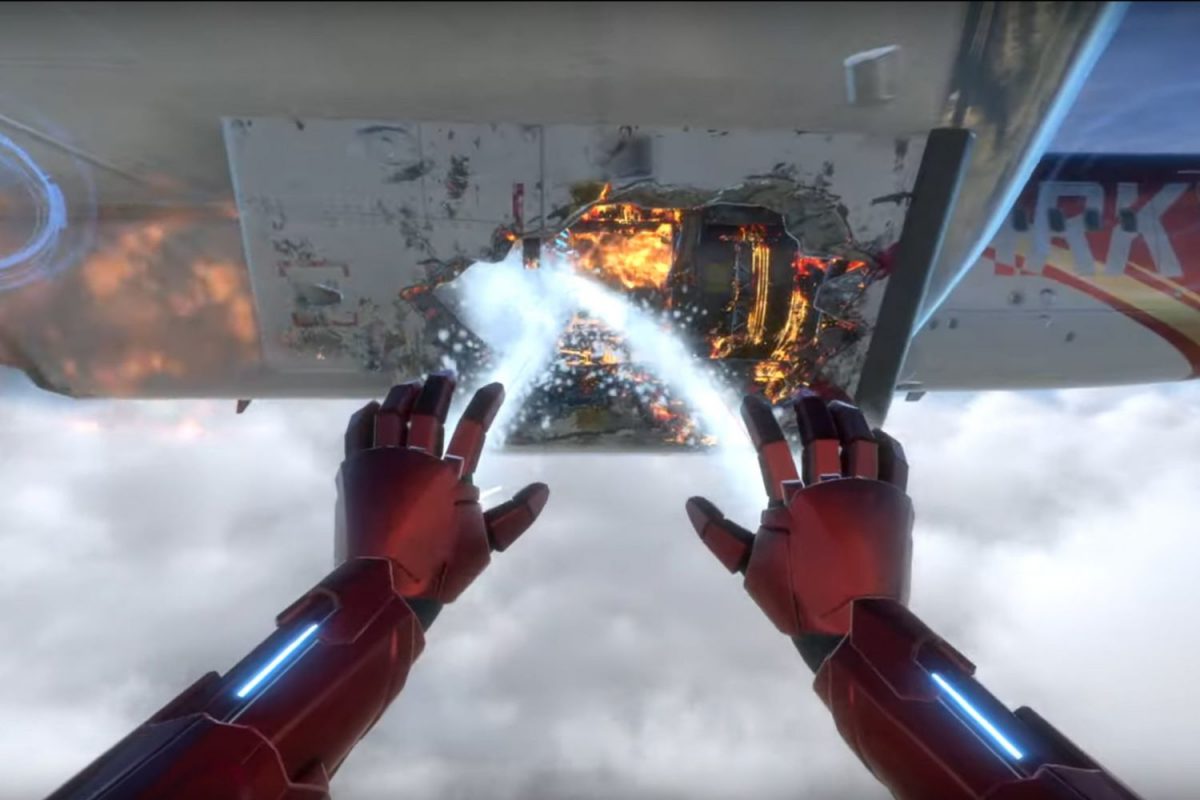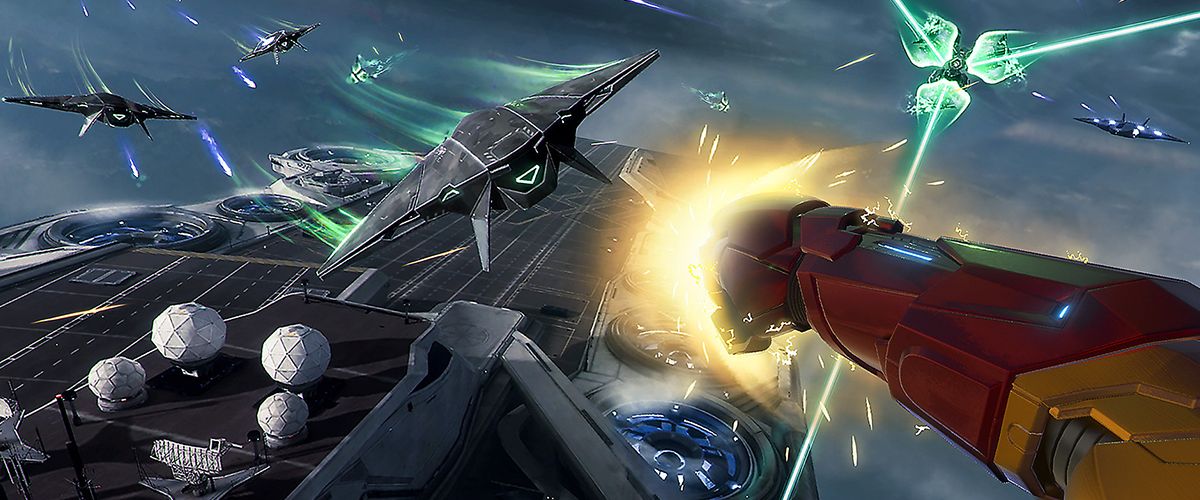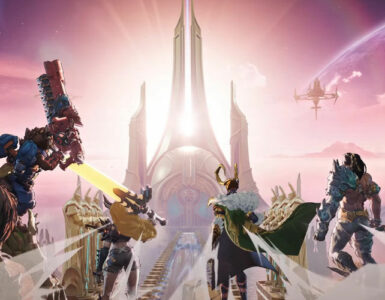“I am… Iron Man.”
The final words of Tony Stark as he snapped the Power Gauntlet to remove Thanos and his army from existence at the cost of his own life at the end of Avengers: Endgame are now one of the character’s finest moment outside of the comics. Even a year later, folks are still awestruck at the man’s achievements, however fictional they may be.

In the year following the end of Endgame, fans of the comic book franchise will be treated to two highly-anticipated Marvel games that are finally coming out, and even though neither are not related to the Marvel Cinematic Universe in any way, both games still carry the torch for the Marvel Universe at large, for true believers to get more up close and personal with their favourite heroes.
The first of them is Camouflaj’s Iron Man VR, which will launch on 3 July exclusively on PlayStation VR. In this game, players get to live out their wildest dreams of actually putting on the iconic suit, and take to the virtual skies as the Armoured Avenger himself, blasting foes with his repulsors and taking flight in scintillating 360-degree movement, thanks to a combination of the PSVR headset and PlayStation Move Motion Controllers.

According to game designer Ryan Darcy, it was not just about the machine, but it is also the man, Tony Stark, himself that makes him a “perfect match” for the platform.
“[One of the] key areas we’ve spoken a lot about is the freedom of flight. I think that’s something that’s super unique to our game, especially with PSVR. The idea that you can turn a full 360 degrees and have that freedom, and then walking away from the game feeling super comfortable, and feeling like Iron Man. I genuinely believe that that freedom is something that we really push forward in the VR space,” said Darcy in a recent interview with Geek Culture.
“In addition, we put a big emphasis on making sure that we’re telling a meaningful story. The interactive cinematics, character development and writing… these are all things that we put a lot of energy into, that, in my opinion, really elevates the game to that true AAA quality but in VR, that I think a lot of players have been waiting for. Having something that is the complete package and not just a mere tech demo.”
There are many aspects of Iron Man’s origins that parallel the game’s development process for Darcy and his team. Much like how Mr. Stark was put under immense pressure building the Mark I suit while in captivity, the Camouflaj devs had a rather tight two-week period to pitch the initial prototype to the Marvel Games execs in order for Iron Man VR to be approved.
Darcy recalls how Camouflaj CEO Ryan Payton approached Marvel to do a new VR game based on the Iron Man IP, and got a green light from the company, but only if the prototype was good in their eyes.
“Troy Johnson, one of our gameplay engineers, was critical in getting that first prototype together, where he laid the foundation for the core flight controls and weapon aiming systems. And they brought the prototype down to Marvel, Marvel played it, and it was enough to push them over the line.”

It was only after Marvel’s initial approval that the true challenge of making Iron Man VR an engaging experience for players began. Again, drawing parallels to the first Iron Man movie, where Tony Stark did tons of testing and prototyping for the flight controls and blasters for his Mark II and Mark III suits, Darcy and his team did rigorous playtesting and tweaking to ensure that large steps were being made in terms of progress for gameplay as a whole.
Interestingly, Darcy cites id Software’s Doom (2016) as one of the main inspirations for Iron Man VR’s combat. The high-octane first-person action was similar to how Iron Man would zip across the battlefield in his suit, blasting foes to oblivion with quick but powerful attacks, sans the blood and gore, of course. So for his team, that fast-paced combat was “critical” in ensuring the combat in Iron Man VR was fun for players, as well as accurate to the character that it was portraying.
Conversely, getting the flight controls right was one of the tougher aspects of Iron Man VR’s development. During the many rounds of playtesting, Darcy and his team realised that a lot of players experienced discomfort while trying to move around as Iron Man in the PSVR headset, and walking away from the PSVR after play. If the controls were too sensitive, the player would typically experience motion sickness. If it was too unresponsive and slow, the player would not be engaged enough.

Maintaining a good balance between the two was essential in making the game accessible “to the widest demographic possible”. As such, the team managed to implement a “one-to-one connection” between the player and the headset, so that the game would respond as the players moved a part of their body, or pushed a button.
“When the player wants to do something, and does a gesture or presses a button, and, and goes to do that action, we need to make sure that the game responds in a way that they expect and so that they don’t break that connection again,” said Darcy. “And likewise, the game also needs to then respond and communicate back to the player in a way that they expect the game to respond.”
“And so, even decisions like basing our flight around turning your body, that is one of the things I would think makes the game super comfortable. Of course, we also support snap turns [and] smooth turning that you would see in more traditional VR titles, and a lot of advanced players love these options. But I think in order to make sure that the game is accessible to the widest demographic possible, you know, starting with that baseline, one-to-one connection between body and mind game is really where I think you start pushing the comfort levels to the point where you could walk away, saying ‘I feel great’. And we’re very hopeful that we’ve kind of hit that mark, based on the response from the demo and kind of everything we’re seeing online.”

As such, Darcy and his team are, in a way, grateful for the game’s delay from February to July, in lieu of the global COVID-19 situation. No time was wasted for Camouflaj during the delay, as the devs spent the past few months polishing various aspects of the game to make it that much more tight mechanically and, ultimately, a more smooth launch experience for them and the players.
“We’ve absolutely been taking advantage of [the delay],” said Darcy. “Specifically, where we have been polishing really spans the entire game. Whether we’re working on a cinematic and pushing that a little bit further, or taking a look at the flight controls after we see it live in players hands, and be like ‘Hmm, maybe we can make some small tweaks here, weapons, effects, music. Everything that we do is in these final stages of polishing. We step back and we look at the game holistically, and try to identify where the big wins are, as far as like, where we can push the game forward without a crazy amount of effort, without introducing instability. And those are the areas that we are largely focused on.”

Looking back, it’s been quite the journey for Camouflaj, as we draw closer to the release of Iron Man VR. Despite the challenges that the team was fraught with during development, Darcy commends his colleagues for adopting Stark’s “hardheadedness” in ensuring that the flight controls were made in such a way that was both realistic and fun at the same time, without compromising on quality of life.
“In game development, generally speaking, there are a lot of bigger wins that you can get where you add this or add that and then, ‘Whoa’, the [new] feature pushes [the game’s development]] really far forward,” Darcy explained. “But the further you get along, it’s like you’re fighting for every inch [to get the mechanics right], and that’s kind of how it’s been with developing the flight model for the game. It’s just a series of playtesting and refining and trying new things and seeing what works, seeing what doesn’t work.”
“We went in with an attitude where it’s, like, ‘Hey, we can try anything.’ And if it doesn’t work, maybe we just need to make some small tweaks in order to make it work. We don’t want to assume that there’s just no way you can fly 250 miles an hours and turn away, like how Iron Man turns. We believe there’s a way to do that, such that the player is comfortable and feels like Iron Man.”

And we have no doubt in our minds that Mr. Stark himself would be proud of Camouflaj’s achievements in this game.
Iron Man VR launches on 3 July exclusively on PSVR. The free demo for the game is out now.
Marion has a serious RPG addiction. Sometimes it bleeds into real life; he forgets to sleep because he thinks he has a Witcher’s body clock. Forgive him in advance if he suddenly blurts out terms such as “Mind Flayer” and “Magic Missile”, because never once does he stop thinking about his next Dungeons & Dragons game.














